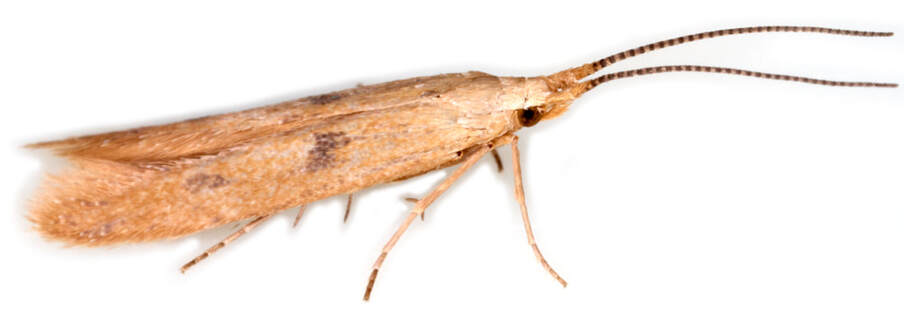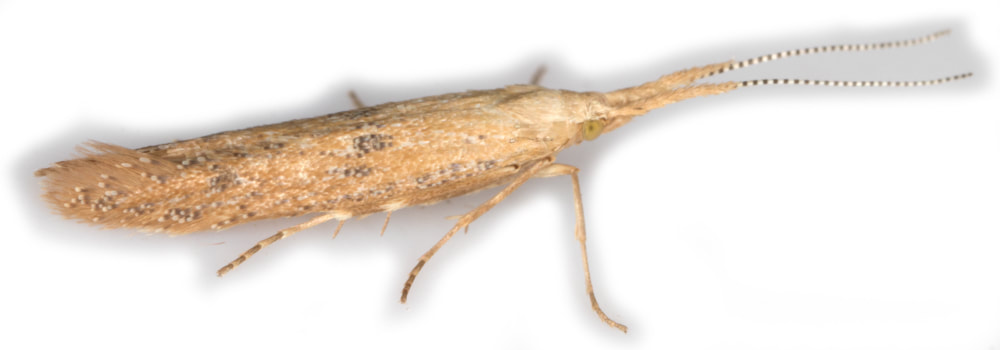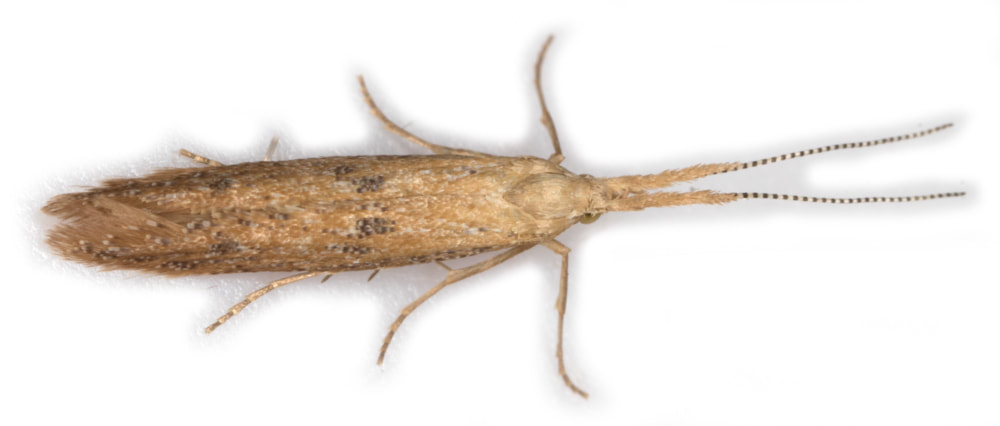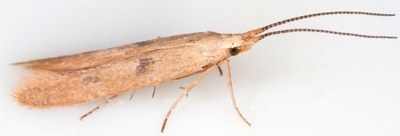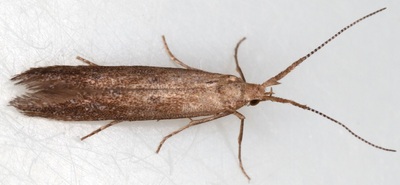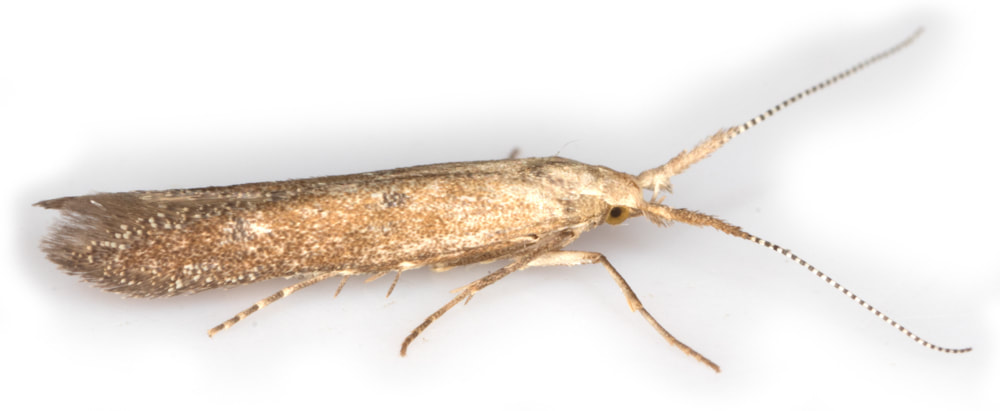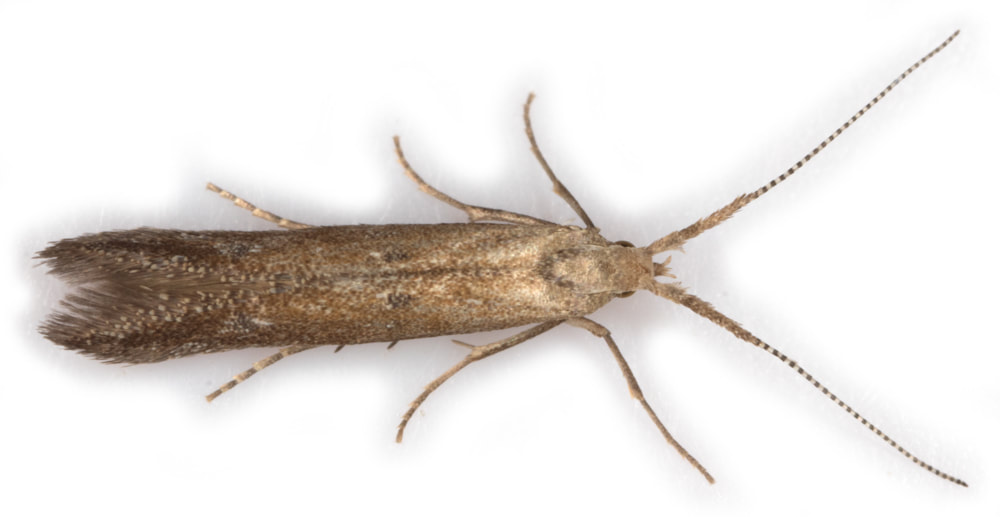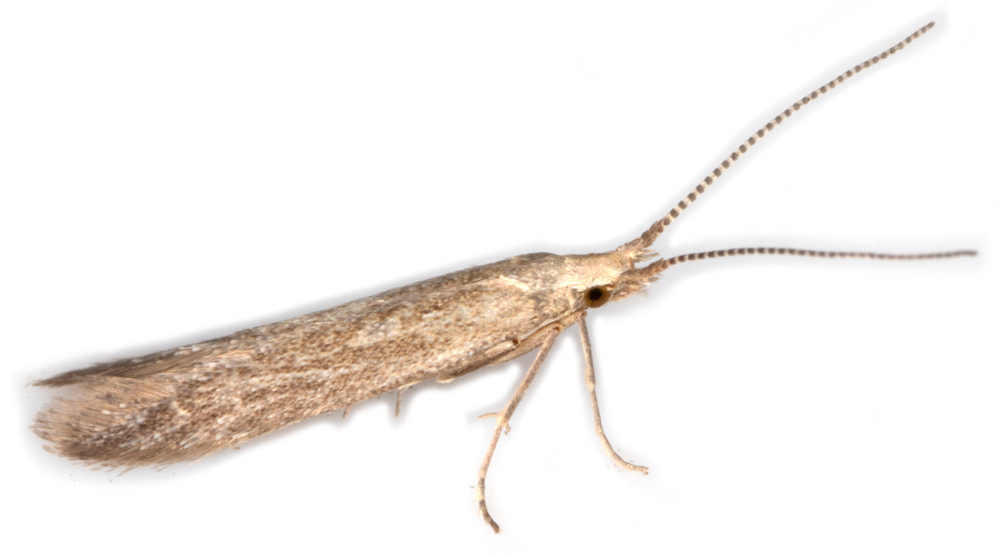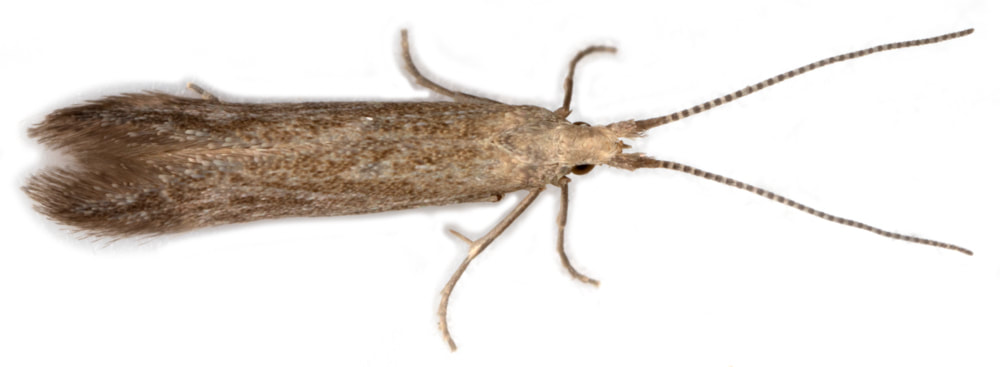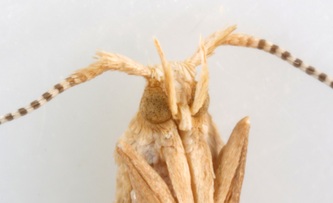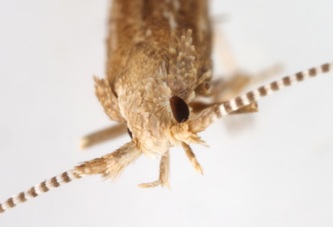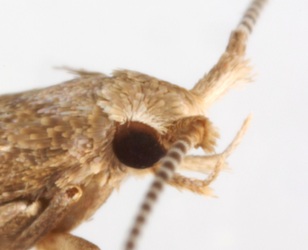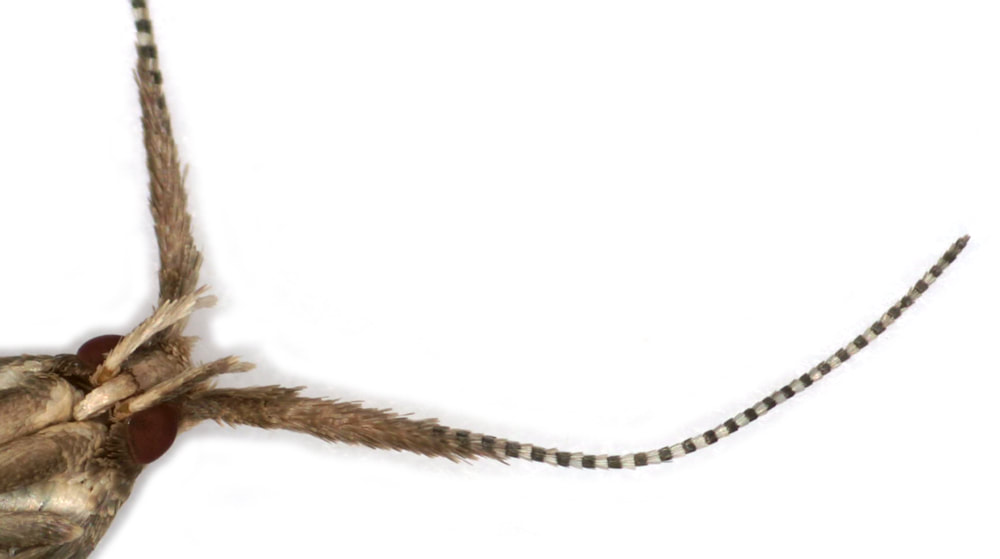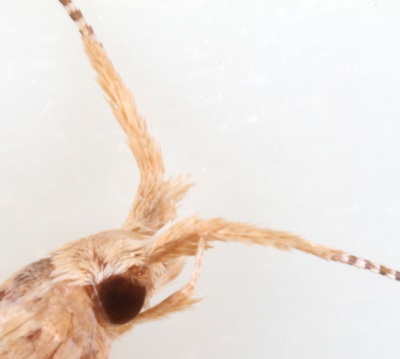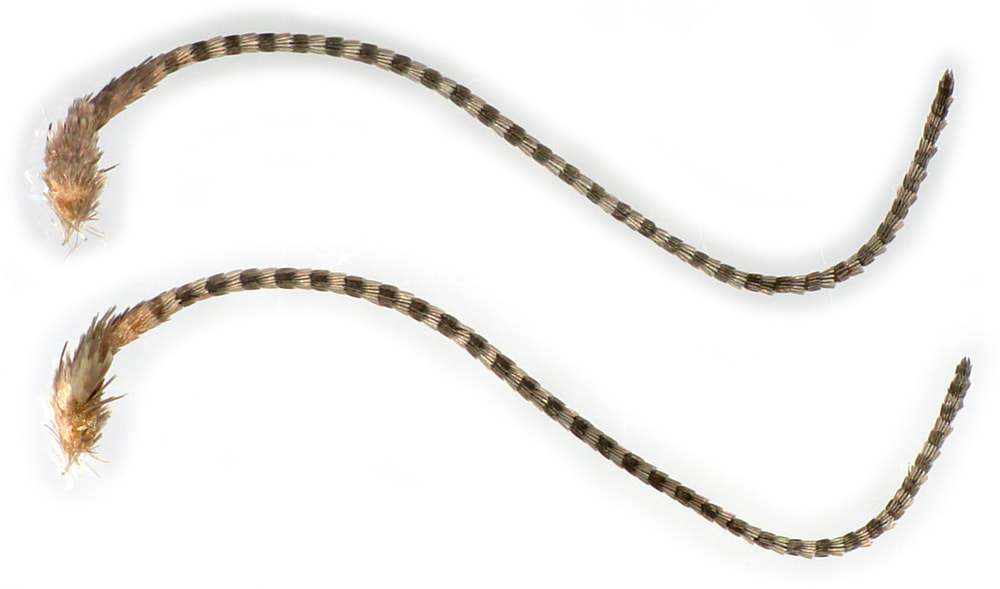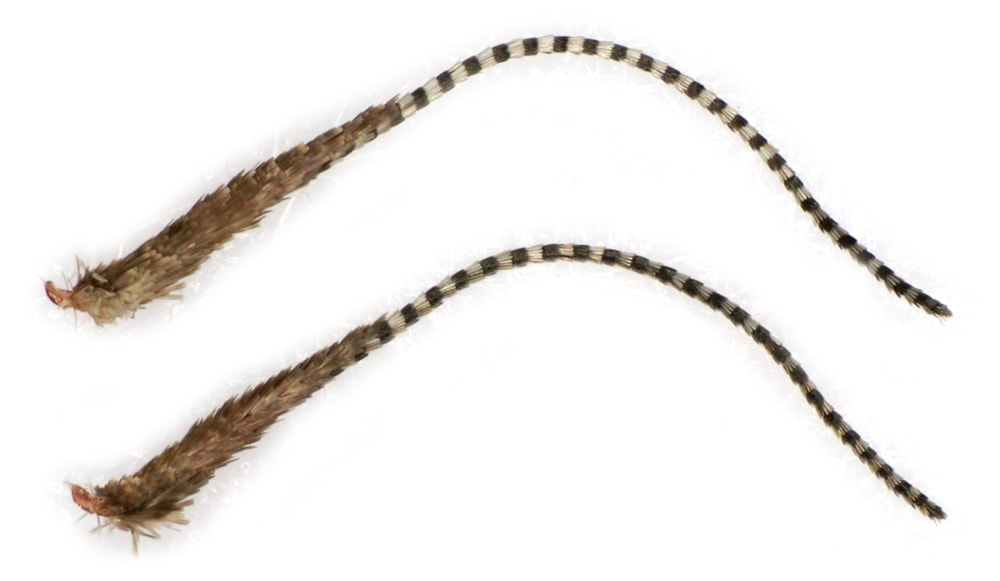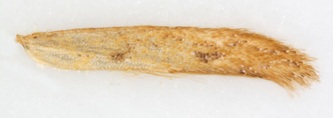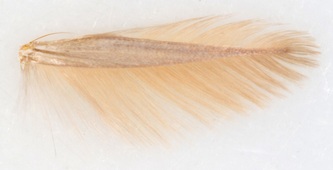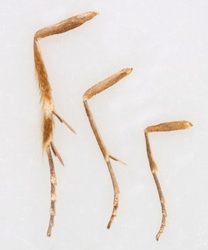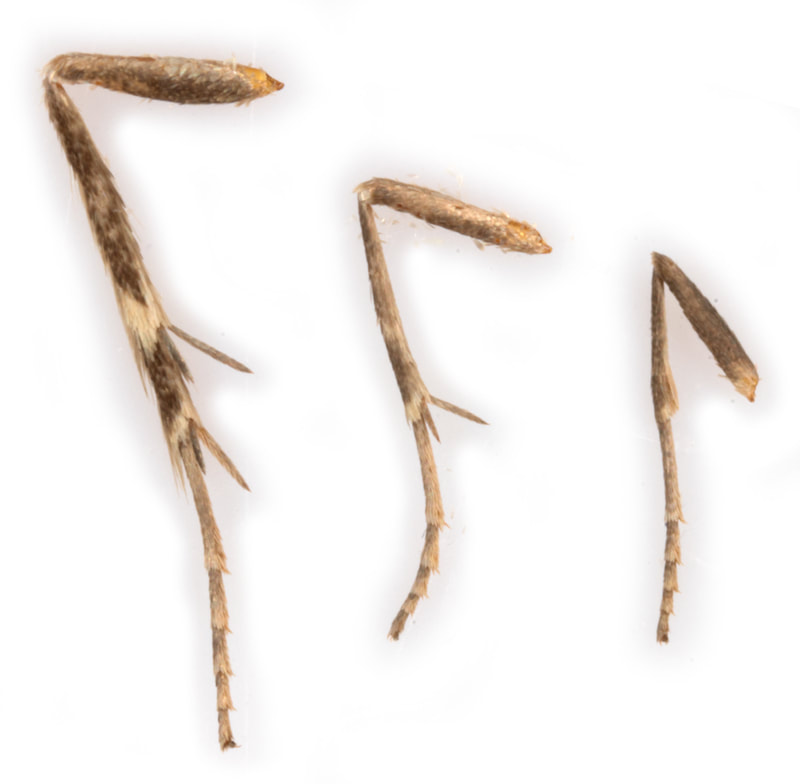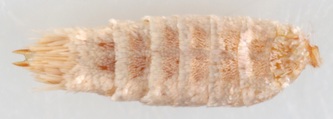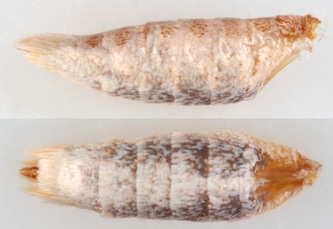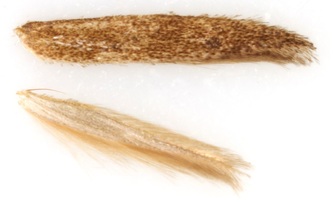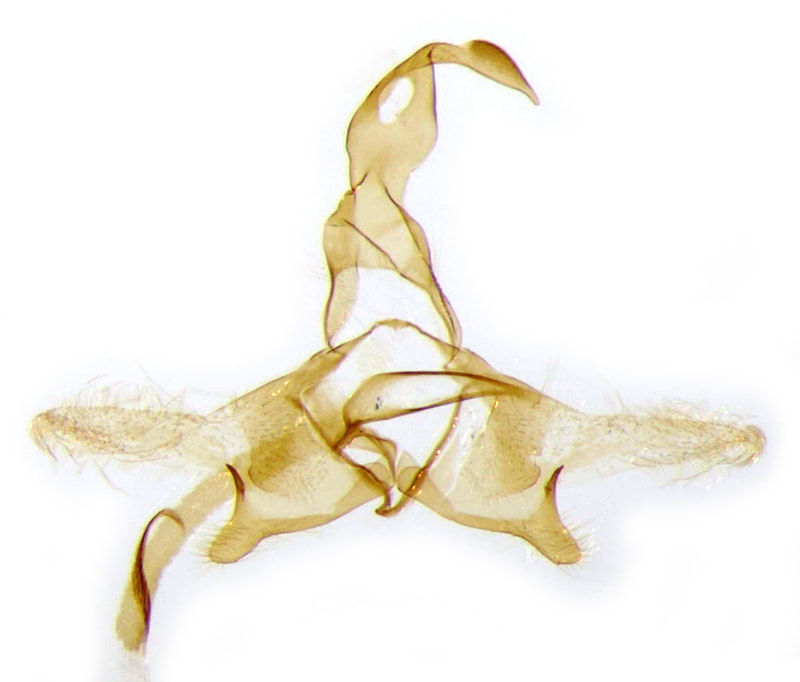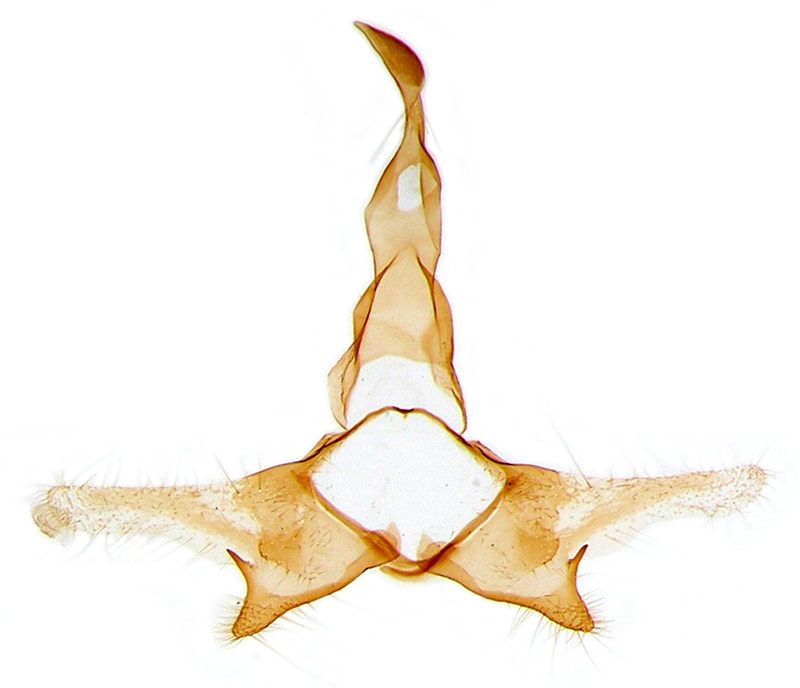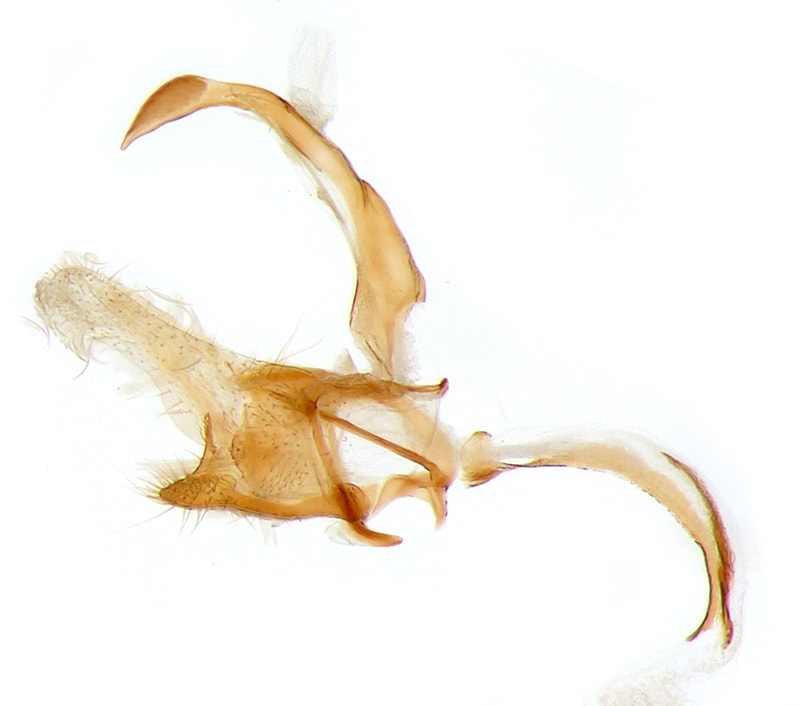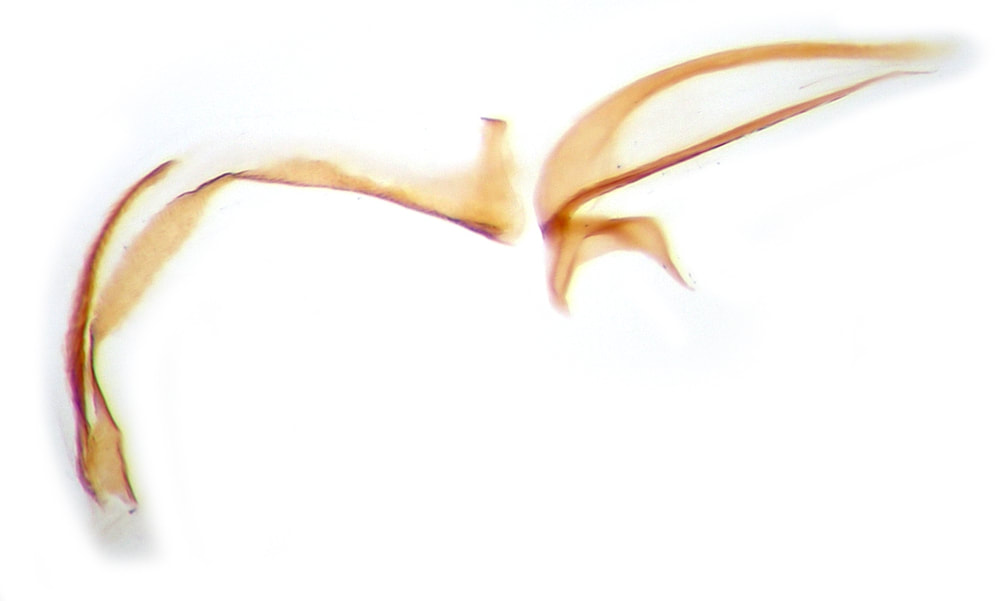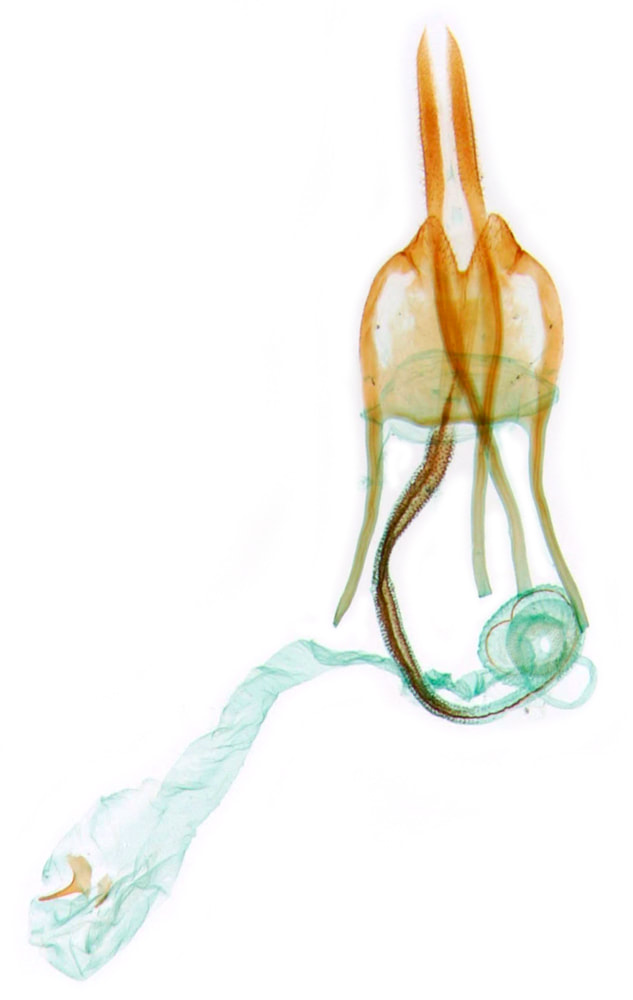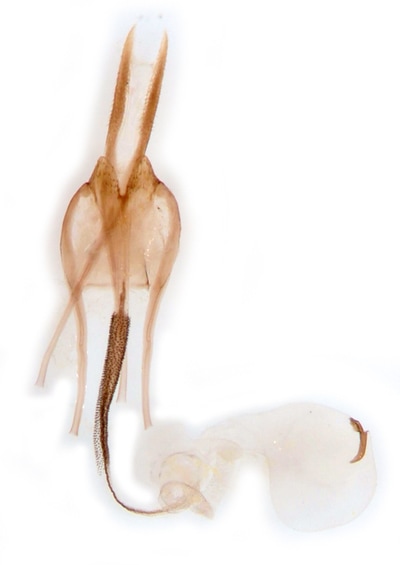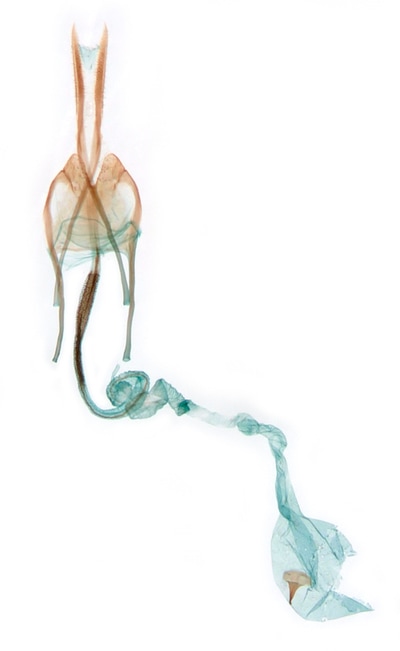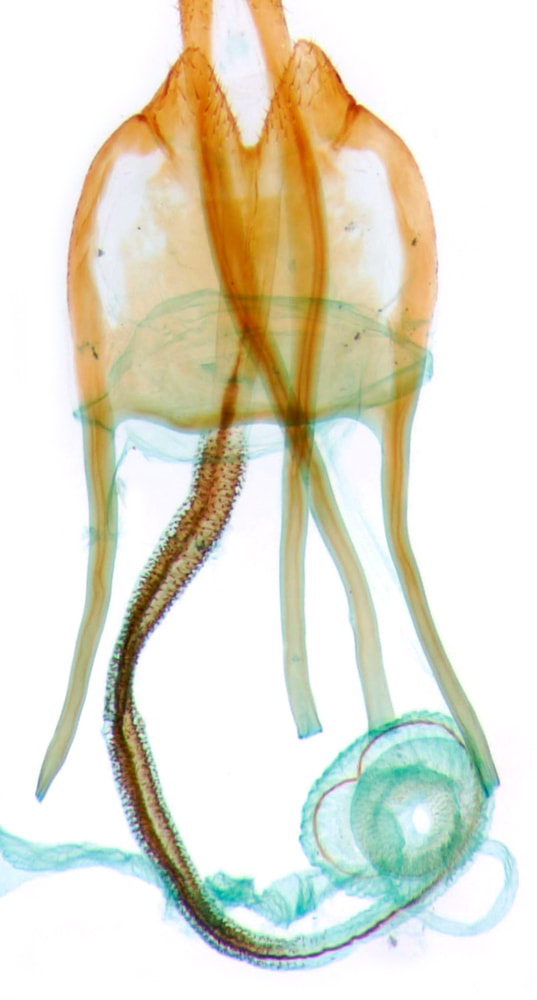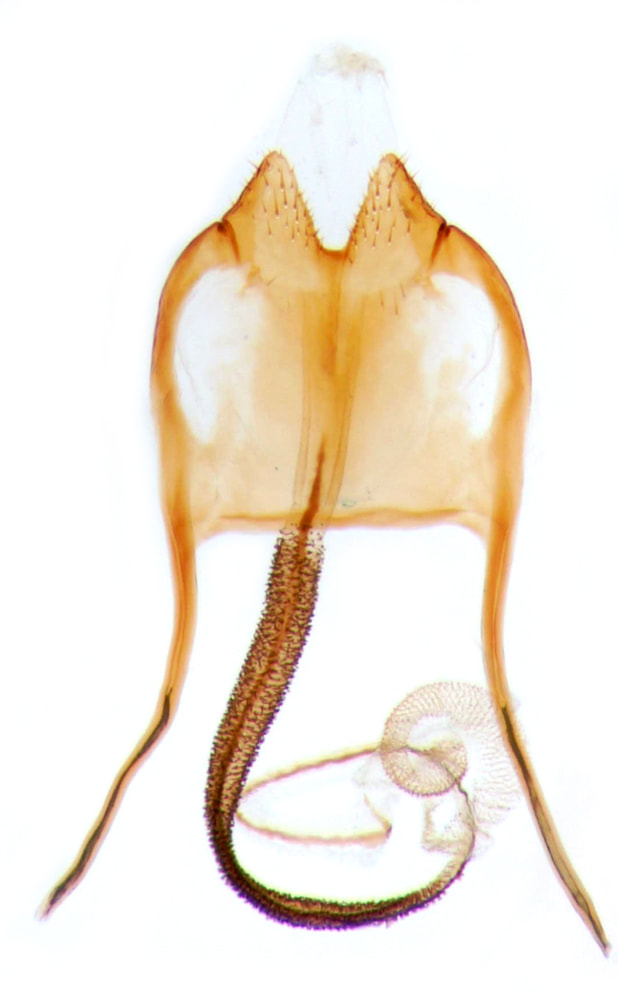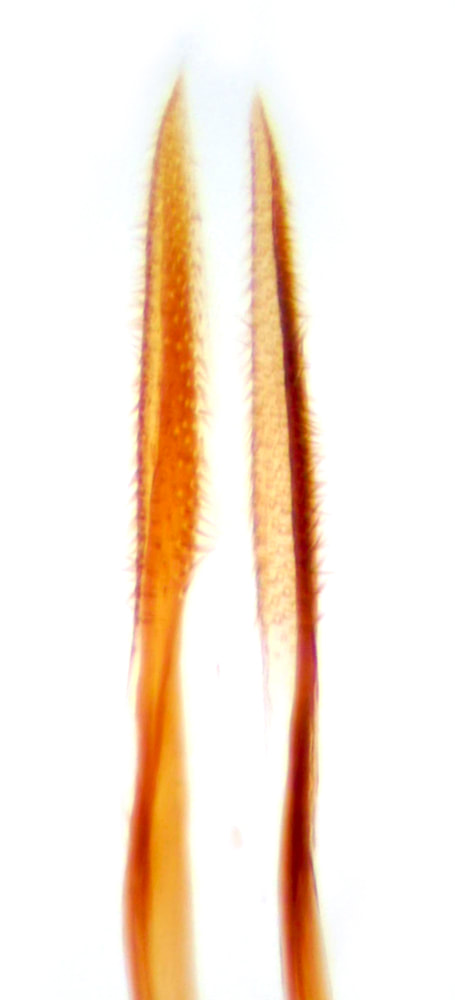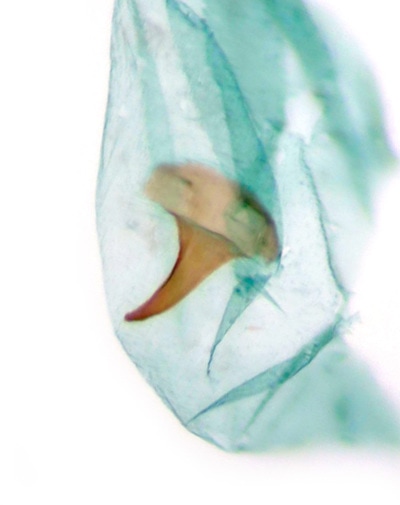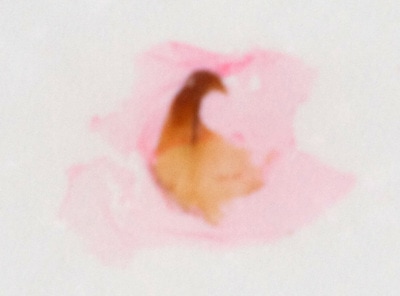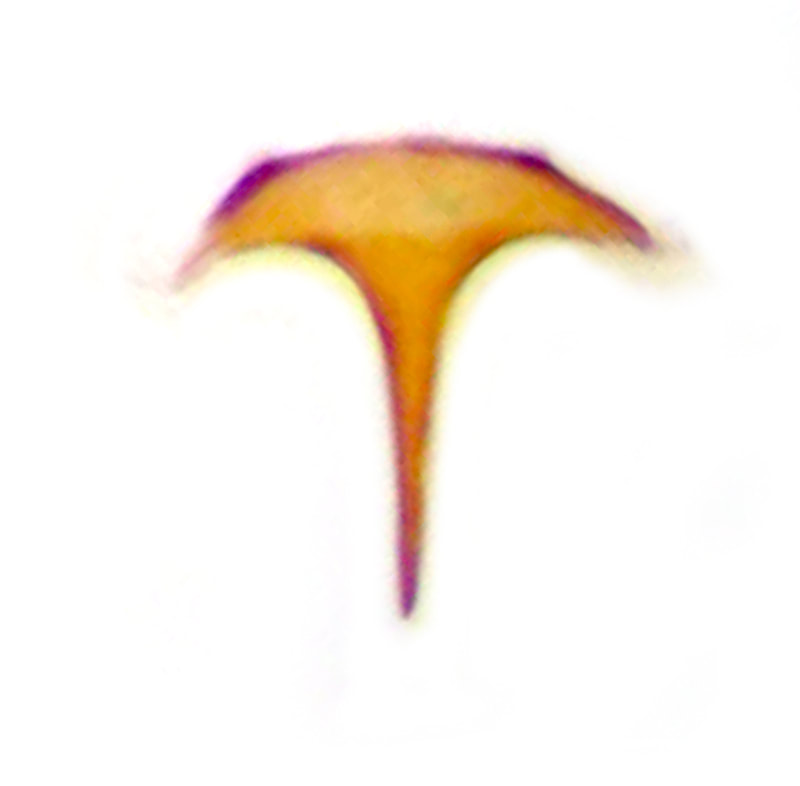37.108 Coleophora salicorniae (Glasswort Case-bearer)
ws: 12-14mm; Jul-Aug; glasswort (Salicornia spp); saltmarsh on English coasts from Cornwall to Yorkshire, N&S Wales.
|
§1 Foulness, Essex; 01/08/2010; male; fw 5.9mm
§2 Foulness, Essex; 08/08/2010; male; fw 6.3mm §3 Foulness, Essex; 14/08/2011; male §4 Foulness, Essex; 14/08/2011; male; fw 6.3mm §5 Foulness, Essex; 14/08/2011; female; fw 5.7mm §6 Foulness, Essex; 19/08/2012; female; fw 5.9mm §7 Foulness, Essex; 19/08/2012; female; fw 6.1mm §8 Foulness, Essex; 19/08/2012; female; fw 6.5mm (removed) §9 Foulness, Essex; 19/08/2012; female; fw 6.9mm §10 Snettisham, Norfolk; 24/07/2014; male §11 Snettisham, Norfolk; 24/07/2014; male §12 Snettisham, Norfolk; 24/07/2014; female All images © Chris Lewis |
§13 Foulness, Essex; 26/07/2014; female; fw 6.7mm
§14 Foulness, Essex; 01/08/2015; male; fw 6.5mm §15 Foulden Common, Norfolk; female; fw 5.2mm §16 Westcliff-on-sea, Essex; 02/08/2018; female; fw 6.4mm §17 Foulness, Essex; 03/08/2018; male; fw 6.2mm §18 Foulness, Essex; 03/08/2018; female; fw 6.7mm §19 Foulness, Essex; 03/08/2018; female; fw 6.7mm §20 Pound Wood, Essex; 05/08/2020; female; fw 6.0mm §21 Pound Wood, Essex; 05/08/2020; female; fw 5.6mm §22 Foulness, Essex; 14/08/2021; male; fw 6.6mm §23 ??; ??/??/2021; male; fw 5.7mm |
Page published Mar 2011 |§7-9 added and text amended 24/08/2012 | §10-12 added 05/08/2014 | §13 added 12/08/2014 |
§14 added 26/08/2015 | §15 added 16/04/2017 | §16 added 06/02/2019 | §17-19 added and §8 removed 18/02/2019 |
§20&21 added 03/02/2021 | §22 added 14/12/2021
§14 added 26/08/2015 | §15 added 16/04/2017 | §16 added 06/02/2019 | §17-19 added and §8 removed 18/02/2019 |
§20&21 added 03/02/2021 | §22 added 14/12/2021
